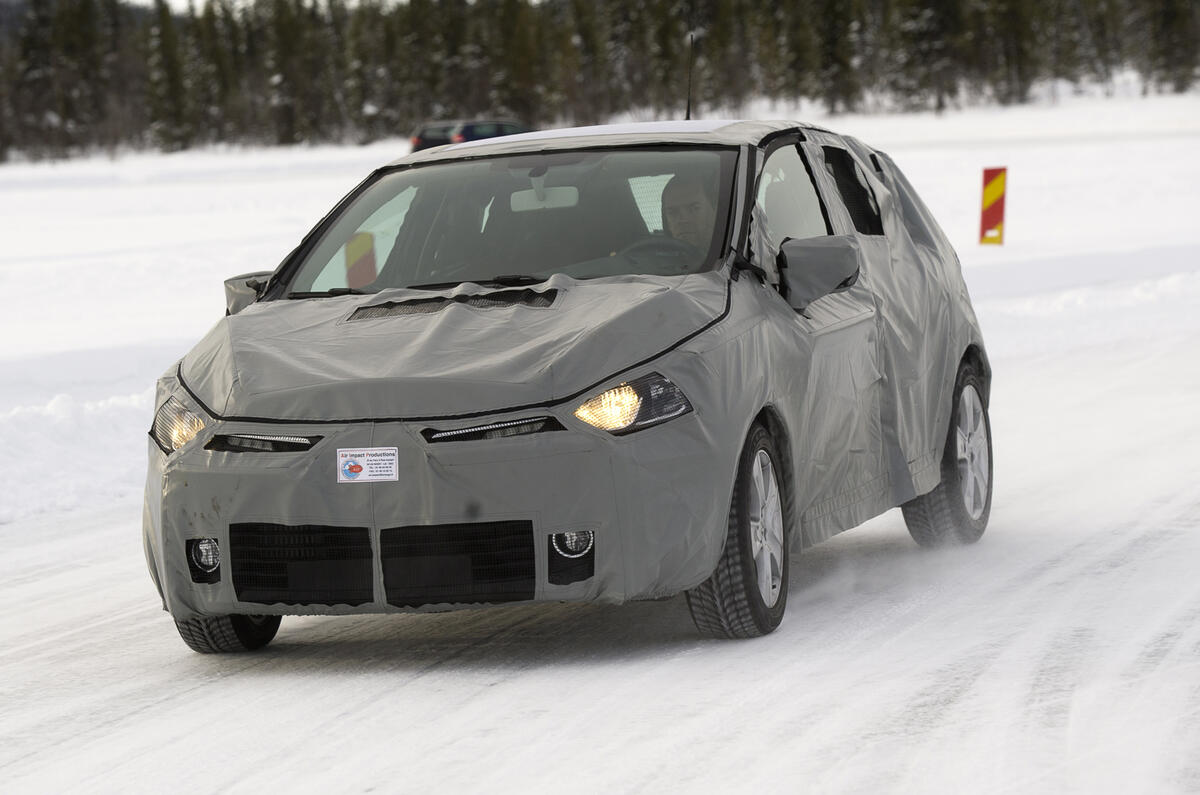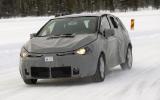What is it?
A shed on wheels? Not exactly. This is project X98, or the next-generation Renault Clio, heavily disguised on its final tests in Jukkasjärvi near Kiruna, north of Sweden, prior to its first public appearance at next Paris motor show, and its market launch right after.
The Clio's fourth generation keeps the same platform, albeit deeply modified, with some 110kg taken off it. At launch time, engines will be two new TCE direct injection turbos: a three cylinder, 0.9-litre with 89bhp and a four cylinder 1.2-litre with 114bhp. On the diesel front we'll get two variants of the extensively updated 1.5 dCi, with 74bhp and 89bhp.
The gearbox is the same five-speed manual as the existing Clio but with revised linkage and different ratios. The steering is new, with electric power assistance and a faster rack.
Exterior dimensions remain nearly the same, but tracks are 30mm wider and the car is 30mm lower.
What's it like?
Looking at this disguised PT1 (code for the first 150 prototypes made in the production line, in Turkey) you wouldn't say it's a car, let alone a new Clio. But we can guarantee it is, having seen the final version five days earlier, at Renault's top secret Technocenter, in France. Unsurprisingly, it looks much better than the old car, now seven years old.
The interior gets a fixed tablet called the R-Link that can be uploaded with 50 different apps. Seats are improved – the driving position benefits from that and also from the steering wheel's more upright positioning and more generous adjustments.
A frozen lake, with minus 18 degrees Celsius, is hardly the best environment to test a new model, even with a reassuring 40cm of ice between feet and water.
We tried the 0.9 TCE-engined version. It takes less than a second to start up, even from extreme cold and idles with just a hint of its three-cylinder architecture. Soundproofing is thicker than on the four cylinder and the end result is good, you only feel some minor vibrations in the seat.
At very low revs it moves the car with ease but after 2200rpm it is obvious that the torque curve gets to its maximum, even if the engineers from Renault refused to comment on detailed data. It revs up until 6250rpm with linearity and without much added noise.
The gearbox feels considerably more precise and the ratios didn't seem too long. The steering felt quicker but driving on ice is not the best way to evaluate this. Surprisingly, the ice lake had some bumps that showed a suspension tuning capable of dealing with that in a very Renault-like manner: comfortable but with great damping.
Grip depended on whether the wind had blown a layer of snow over the ice. When it hadn't, the handling felt precise and predictable. There's no button to disconnect the ESP but it's action was very discreet and helpful. All in all, the car felt light, eager to accelerate and much more solid than the old Clio.
Should I buy one?
If you're looking for a supermini, by the end of the year you'll have a lot of good cars to choose from. We're sure Clio will be one of them. The three-cylinder turbo 0.9 is lively and, presumably, frugal, too. Of course we have to test it on proper roads to draw further conclusions, but the first impression was very positive.














Join the debate
Add your comment
Re: Renault Clio 1.0 TCE
The width issue is a pain with the new car. I can only just get my present model through my garage door, though there is acres of room once I'm in.Re: Renault Clio 1.0 TCE
Re: Renault Clio 1.0 TCE